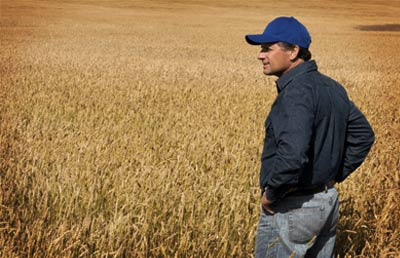Will Excess Loss Rules Apply to Your CCC Transactions?

Last week, we did a post on how electing to receive a loan deficiency payment (LDP) may negatively affect the amount of ARC or PLC payments that you will receive in October 2017 for the 2016 crop. One option to get around these limits is to place a loan on your crop (most likely only hard red wheat for the 2016 crop year, however, corn may get close in certain parts of the country) and then pay it off with a commodity certificate. The net gain to the farmer under this strategy will not reduce the amount of ARC or PLC payment in 2017 (assuming the farmer will max out on these payments).
Certain farmers have commented that they would rather get the LDP now since they do not know what the payment will be in 2017. However, for many farmers that elected PLC on wheat and have a fairly high base acres and yields, it is fairly easy to predict what the 2017 payment will be. Historically, almost 55% of the 2016 wheat crop will be sold by September 2016. Therefore, the current estimated 2016/2017 wheat MYA price of $3.80 may change some, but it is likely not to exceed $4.20. At the $4.20 number, the farmer will receive a $1.30 per bushel PLC payment and if you plug that amount into your PLC yield, base acres times 85% you can quickly determine if you will be over the limit. If you are well over the limit, receiving LDP payments now simply reduces dollar-for-dollar any PLC or ARC payments in 2017 (subject to sequestering adjustments).
Therefore, if you decide to skip LDP and use commodity certificates, you must be careful to determine if these payments will affect your net farm loss deduction for this year. Part of this strategy requires borrowing money from the Commodity Credit Corporation (CCC) which then requires you to pay it off with commodity certificates that you purchase. By obtaining this loan, you are now subject to the excess farm loss rules.
These rules only allow you to deduct the greater of:
- $300,000, or
- Cumulative net farm income from the previous five years.
Many farmers have farm losses and net cash rent income reported on Schedule E. The net cash rent income is not allowed to be offset with the farm loss on Schedule F (or from pass-through entities such as an S corporation or partnership). In this case, the excess farm loss for 2016 may limit how much they can deduct. Let’s look at an example:
Farmer Hardin Red operates a 30,000 acre wheat farm in western Kansas. Due to the very low price of hard red wheat, he knows that he will max out on his PLC payment for the 2016 crop, but wants to receive the 15 cent per bushel LDP equivalent. Therefore, he exchanges commodity certificates to lock in this gain. This limits the amount of farm loss than he can deduct for 2016. He farms in a partnership with his brother and cash rents ground to the partnership. His share of the farm partnership loss is $700,000. His net cash rent income is $500,000 and his wife receives $200,000 from a job in town. On a net basis, he has net income of zero for the year. However, he is only allowed to deduct $300,000 of the farm loss and is then required to pay income taxes on the remaining $400,000. The $400,000 loss not allowed for 2016 is carried forward to 2017 as an additional deduction and will be allowed in full unless he is still subject to the excess farm loss rules (he borrows money from CCC in 2017).
As you can see, taking advantage of the commodity certificate exchange can make money for you this year, but it may result in limiting the amount of farm loss you can deduct. Make sure to discuss this with your farm tax advisor before you commit to this strategy.
Paul Neiffer is a certified public accountant and business advisor specializing in income taxation, accounting services, and succession planning for farmers and agribusiness processors. Paul is a principal with CliftonLarsonAllen in Walla Walla, Washington, as well as a regular speaker at national conferences and contributor at agweb.com. Raised on a farm in central Washington, he has been immersed in the ag industry his entire life, including the last 30 years professionally. Paul and his wife purchase an 180 acre ranch in 2016 and enjoy keeping it full of animals.

Comments are closed.